Is Diverticulitis an Autoimmune Disorder: A Hypothesis
Does diverticulitis have connections to inflammatory bowel disease? Explore the hypothesis that diverticulitis may be a type of inflammatory bowel condition.
Understanding Diverticulitis
Diverticulitis is a condition characterized by the inflammation of small pouches, called diverticula, that can form in the lining of the digestive tract, most commonly in the large intestine or colon. This inflammation can lead to symptoms such as abdominal pain, bloating, changes in bowel habits, and potentially more serious complications.
The Fiber Deficiency Link
It is widely accepted by epidemiologists that the formation of diverticula is linked to a deficiency in dietary fiber intake. A lack of fiber can lead to changes in the intestinal microecology, including alterations in the bacterial flora within the gut.
Exploring the Autoimmune Connection
This article presents a hypothesis that the changes in the gut flora associated with fiber deficiency may permit a low-grade chronic inflammation in the mucosal lining of the intestines. This low-grade inflammation could be the precursor to the development of acute diverticulitis, an infection of the diverticula.
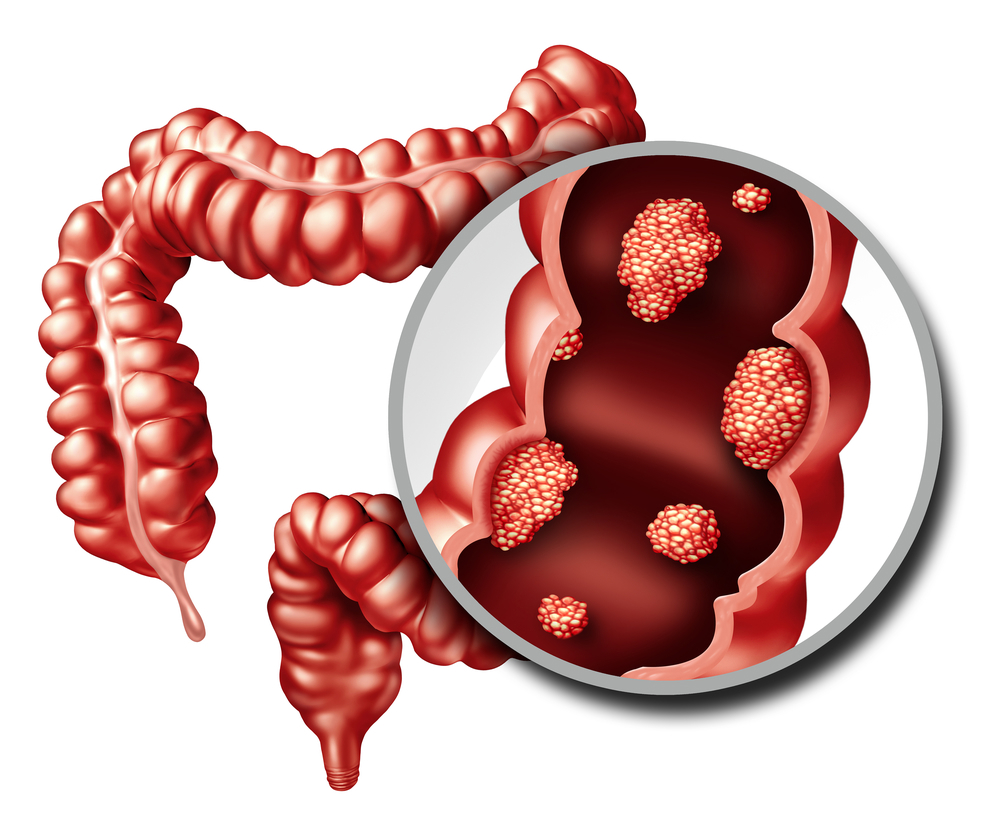
Evidence Supporting the Hypothesis
The hypothesis is strengthened by early reports that anti-inflammatory agents, such as mesalamine, and probiotics, which can help regulate the immune process, may be beneficial in managing diverticulitis. This suggests that the underlying cause of diverticulitis may be linked to an inflammatory or autoimmune-like process.
Comparing to Inflammatory Bowel Diseases
The hypothesis proposes that diverticulitis may be a type of inflammatory bowel disease (IBD), similar to conditions like Crohn’s disease or ulcerative colitis. These IBDs are characterized by chronic inflammation of the digestive tract, which can lead to a variety of symptoms and complications.
Potential Implications
If the hypothesis is correct, and diverticulitis is indeed a type of IBD, it could have significant implications for the way the condition is understood, diagnosed, and treated. This could open the door to new therapeutic approaches and management strategies for individuals suffering from diverticulitis.

Is Diverticulitis Considered an Autoimmune Disorder?
While the hypothesis presented in this article suggests a potential link between diverticulitis and autoimmune processes, diverticulitis is not currently classified as an autoimmune disorder. More research is needed to fully understand the underlying mechanisms and determine if diverticulitis can be considered a type of inflammatory bowel disease or autoimmune condition.
Can Diverticulitis Lead to Inflammatory Bowel Disease?
The hypothesis presented in this article proposes that the low-grade chronic inflammation associated with diverticulitis may be a precursor to the development of more severe inflammatory bowel diseases. However, the direct relationship between diverticulitis and IBD is not yet fully understood, and further research is needed to clarify any potential connections.
What Causes the Chronic Inflammation in Diverticulitis?
According to the hypothesis, the chronic inflammation in diverticulitis is believed to be linked to changes in the gut microbiome, specifically a decrease in the diversity and balance of the bacterial flora. This shift in the intestinal microecology, often associated with a lack of dietary fiber, may allow for the development of low-grade inflammation in the mucosal lining of the intestines.
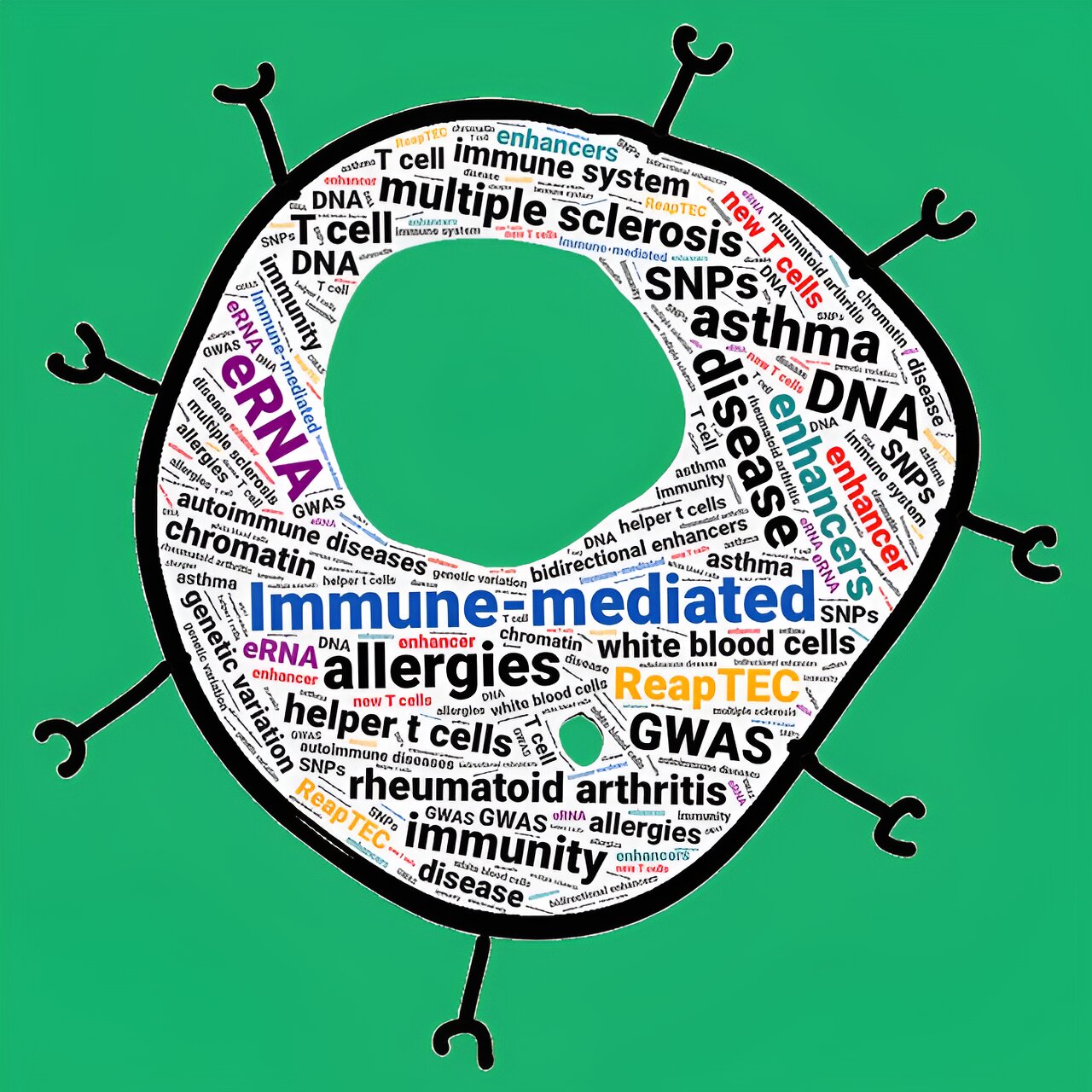
Can Probiotics Help Manage Diverticulitis?
The article notes that early reports have suggested that probiotics, which can help regulate the immune process, may be beneficial in managing diverticulitis. This supports the hypothesis that the underlying cause of diverticulitis may be linked to an inflammatory or autoimmune-like process that could potentially be modulated through the use of probiotics or other immune-regulating therapies.
How Does Diverticulitis Compare to Inflammatory Bowel Diseases?
The hypothesis presented in this article proposes that diverticulitis may be a type of inflammatory bowel disease (IBD), similar to conditions like Crohn’s disease or ulcerative colitis. These IBDs are characterized by chronic inflammation of the digestive tract, which can lead to a variety of symptoms and complications. If diverticulitis is indeed a type of IBD, it could have significant implications for the way the condition is understood, diagnosed, and treated.
What are the Potential Implications of the Diverticulitis-IBD Hypothesis?
If the hypothesis is correct, and diverticulitis is indeed a type of inflammatory bowel disease, it could open the door to new therapeutic approaches and management strategies for individuals suffering from diverticulitis. This could include the use of anti-inflammatory medications, probiotics, and other interventions typically employed in the treatment of IBDs.

A hypothesis: is diverticulitis a type of inflammatory bowel disease?
Save citation to file
Format:
Summary (text)PubMedPMIDAbstract (text)CSV
Add to Collections
- Create a new collection
- Add to an existing collection
Name your collection:
Name must be less than 100 characters
Choose a collection:
Unable to load your collection due to an error
Please try again
Add to My Bibliography
- My Bibliography
Unable to load your delegates due to an error
Please try again
Your saved search
Name of saved search:
Search terms:
Test search terms
Email:
(change)
Which day?
The first SundayThe first MondayThe first TuesdayThe first WednesdayThe first ThursdayThe first FridayThe first SaturdayThe first dayThe first weekday
Which day?
SundayMondayTuesdayWednesdayThursdayFridaySaturday
Report format:
SummarySummary (text)AbstractAbstract (text)PubMed
Send at most:
1 item5 items10 items20 items50 items100 items200 items
Send even when there aren’t any new results
Optional text in email:
Create a file for external citation management software
Full text links
Wolters Kluwer
Full text links
. 2006 Aug;40 Suppl 3:S121-5.
2006 Aug;40 Suppl 3:S121-5.
doi: 10.1097/01.mcg.0000225502.29498.ba.
Martin H Floch
1
Affiliations
Affiliation
- 1 Section of Digestive Disease, Department of Internal Medicine, Yale University School of Medicine, New Haven, CT, USA.
PMID:
16885694
DOI:
10.1097/01.mcg.0000225502.29498.ba
Martin H Floch.
J Clin Gastroenterol.
2006 Aug.
. 2006 Aug;40 Suppl 3:S121-5.
doi: 10.1097/01.mcg.0000225502. 29498.ba.
29498.ba.
Author
Martin H Floch
1
Affiliation
- 1 Section of Digestive Disease, Department of Internal Medicine, Yale University School of Medicine, New Haven, CT, USA.
PMID:
16885694
DOI:
10.1097/01.mcg.0000225502.29498.ba
Abstract
It is accepted by epidemiologists that diverticula formation in the colon is related to a deficiency in dietary fiber intake, but the cause of acute diverticulitis remains unknown. A hypothesis is presented that acknowledges from the literature that fiber deficiency is also related to an altered intestinal microecology with a change in the bacterial flora. It is hypothesized that the change in the flora with a decrease in their influence on the immune process permits a low-grade chronic inflammation in the mucosa, which is the first step in developing an acute infection of diverticula or diverticulitis. There is some evidence that the low-grade chronic inflammation is present in subjects with diverticula, which is the forerunner of acute diverticulitis. This hypothesis is strengthened by early reports that anti-inflammatory mucosal agents such as mesalamine and immune process regulators such as probiotics may improve diverticulitis.
It is hypothesized that the change in the flora with a decrease in their influence on the immune process permits a low-grade chronic inflammation in the mucosa, which is the first step in developing an acute infection of diverticula or diverticulitis. There is some evidence that the low-grade chronic inflammation is present in subjects with diverticula, which is the forerunner of acute diverticulitis. This hypothesis is strengthened by early reports that anti-inflammatory mucosal agents such as mesalamine and immune process regulators such as probiotics may improve diverticulitis.
Similar articles
Intestinal mucus barrier in normal and inflamed colon.
Corazziari ES.
Corazziari ES.
J Pediatr Gastroenterol Nutr. 2009 Apr;48 Suppl 2:S54-5. doi: 10.1097/MPG.0b013e3181a117ea.
J Pediatr Gastroenterol Nutr. 2009.PMID: 19300126
Role of microecology in chronic inflammatory bowel diseases.

Guarner F, Casellas F, Borruel N, Antolín M, Videla S, Vilaseca J, Malagelada JR.
Guarner F, et al.
Eur J Clin Nutr. 2002 Dec;56 Suppl 4:S34-8. doi: 10.1038/sj.ejcn.1601662.
Eur J Clin Nutr. 2002.PMID: 12556945
Review.
Bioecological control of inflammatory bowel disease.
Bengmark S.
Bengmark S.
Clin Nutr. 2007 Apr;26(2):169-81. doi: 10.1016/j.clnu.2006.10.001. Epub 2006 Nov 17.
Clin Nutr. 2007.PMID: 17113199
Review.
Gut microbiota, probiotics and inflammatory bowel disease.
Stephani J, Radulovic K, Niess JH.
Stephani J, et al.
Arch Immunol Ther Exp (Warsz). 2011 Jun;59(3):161-77. doi: 10.1007/s00005-011-0122-5. Epub 2011 Mar 29.
Arch Immunol Ther Exp (Warsz). 2011.
2011.PMID: 21445715
Review.
Clinical evidence for immunomodulatory effects of probiotic bacteria.
Ruemmele FM, Bier D, Marteau P, Rechkemmer G, Bourdet-Sicard R, Walker WA, Goulet O.
Ruemmele FM, et al.
J Pediatr Gastroenterol Nutr. 2009 Feb;48(2):126-41. doi: 10.1097/MPG.0b013e31817d80ca.
J Pediatr Gastroenterol Nutr. 2009.PMID: 19179874
Review.
See all similar articles
Cited by
Age, alcohol, sex, and metabolic factors as risk factors for colonic diverticulosis.
Yan Y, Wu JS, Pan S.
Yan Y, et al.
World J Clin Cases. 2022 Jan 7;10(1):136-142. doi: 10.12998/wjcc.v10.i1.136.
World J Clin Cases. 2022.PMID: 35071513
Free PMC article.Routine antibiotics may not be needed to treat uncomplicated right diverticulitis: A retrospective cohort study.

Lee KY, Lee J, Park YY, Oh ST.
Lee KY, et al.
PLoS One. 2021 Jul 29;16(7):e0255384. doi: 10.1371/journal.pone.0255384. eCollection 2021.
PLoS One. 2021.PMID: 34324608
Free PMC article.Evaluation and Medical Management of Uncomplicated Diverticulitis.
Langenfeld SJ.
Langenfeld SJ.
Clin Colon Rectal Surg. 2021 Mar;34(2):86-90. doi: 10.1055/s-0040-1716699. Epub 2021 Feb 24.
Clin Colon Rectal Surg. 2021.PMID: 33642947
Free PMC article.Review.
Frequency of Bowel Movements and Risk of Diverticulitis.
Jovani M, Ma W, Staller K, Joshi AD, Liu PH, Nguyen LH, Lochhead P, Cao Y, Tam I, Wu K, Giovannucci EL, Strate LL, Chan AT.
Jovani M, et al.
Clin Gastroenterol Hepatol. 2022 Feb;20(2):325-333. e5. doi: 10.1016/j.cgh.2021.01.003. Epub 2021 Jan 5.
e5. doi: 10.1016/j.cgh.2021.01.003. Epub 2021 Jan 5.
Clin Gastroenterol Hepatol. 2022.PMID: 33418133
Free PMC article.Paradigm shift: the Copernican revolution in diverticular disease.
Zullo A, Gatta L, Vassallo R, Francesco V, Manta R, Monica F, Fiorini G, Vaira D.
Zullo A, et al.
Ann Gastroenterol. 2019 Nov-Dec;32(6):541-553. doi: 10.20524/aog.2019.0410. Epub 2019 Aug 2.
Ann Gastroenterol. 2019.PMID: 31700230
Free PMC article.Review.
See all “Cited by” articles
MeSH terms
Full text links
Wolters Kluwer
Cite
Format:
AMA
APA
MLA
NLM
Send To
The Role of Inflammation in Bowel Disease and Diverticular Disease
Chronic or long-term inflammation appears to be linked to an ever-increasing number of medical conditions. Some have well established links to inflammation with the initiating processes – if not the underlying triggers – clearly outlined over years of research.
Some have well established links to inflammation with the initiating processes – if not the underlying triggers – clearly outlined over years of research.
One such condition is inflammatory bowel disease (IBD), a chronic condition involving inflammation of the gastrointestinal tract. The two most common types of IBD are Crohn’s disease and ulcerative colitis. In Crohn’s disease inflammation can affect any part of the gastrointestinal tract, whereas ulcerative colitis affects the mucosal lining of the colon and rectum.
IBD is a complex disease linked to genetic susceptibility, dysbiosis of the intestinal microbiota, immune system deregulation, and environmental factors which remain unclear, all contributing to a cycle of chronic inflammation in the intestine.
A further condition affecting the gastrointestinal tract is diverticular disease, which can develop into diverticulitis. This involves small bulges or pockets that develop in the lining of the large intestine. When there are no symptoms it is called diverticulosis, when there is pain it is diverticular disease, and if it becomes inflamed or infected it is known as diverticulitis.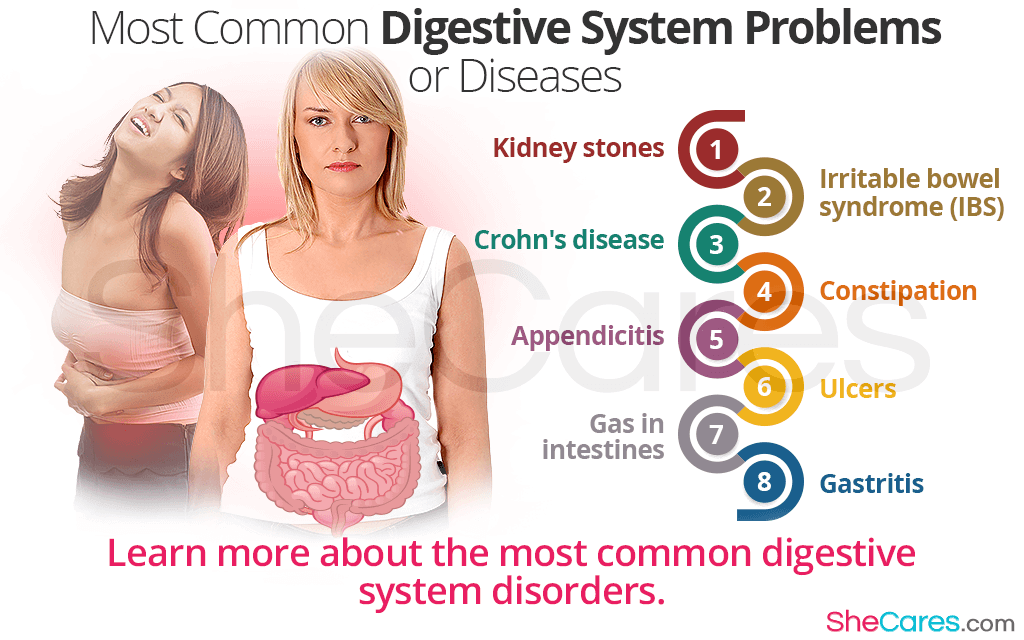
A diagnosis of Crohn’s disease is made using a combination of physical examination, endoscopy, and biopsy showing discontinuous inflammation of any part of the gastrointestinal tract. The presence of C-reactive protein is raised, and in blood tests it reflects the extent of disease activity.
Inflammation in the disease can affect the full depth of the intestine wall, sometimes causing fistulas. The most common locations for inflammation are the muscle valve between the small and the large intestine, then the lower part of the small bowel, the remainder of the small bowel, and finally the colon.
In this condition, as with all inflammation, communication between immune cells (natural killer, T and B cells, dendritic cells and macrophages) with other bodily cells activates pro-inflammatory mediators such as chemokines and cytokines, and generates inflammation.
Among the cytokines produced at inappropriate levels in Crohn’s disease is tumor necrosis factor alpha (TNF-α), found in both normal and inflamed mucosa. This results in immune suppression and chronic disease, so treatment often includes drugs that target TNF-α, such as infliximab. This and a number of other therapies targeted at reducing mucosal inflammation are the foundation of treatment for Crohn’s disease, as well as ulcerative colitis.
This results in immune suppression and chronic disease, so treatment often includes drugs that target TNF-α, such as infliximab. This and a number of other therapies targeted at reducing mucosal inflammation are the foundation of treatment for Crohn’s disease, as well as ulcerative colitis.
Ulcerative colitis is a closely related condition, but in this form of IBD the inflammatory response and cellular changes are confined to the colon, almost always including the rectum. Inflammation is limited to the lining of the intestine, and is continuous along the length of the colon.
As with Crohn’s disease, TNF-α is raised but to a lesser degree. For both conditions, corticosteroids are used to induce remission, then sulfasalazine and mesalamine are given with the aim of maintaining remission.
The underlying basis of both conditions is an auto-immune inflammatory response directed towards a ‘self antigen’ on the patient’s own healthy intestinal cells.
This is maintained by several inflammatory pathways, one of which is the nuclear factor kappa B cell pathway that partially controls activation of immune cells. This pathway causes macrophages in ulcerative colitis patients to become hypo-responsive and macrophages in Crohn’s disease patients to be hyper-responsive.
This pathway causes macrophages in ulcerative colitis patients to become hypo-responsive and macrophages in Crohn’s disease patients to be hyper-responsive.
Many previous studies have highlighted a prominent role for interleukin-12 in the development of IBD. For example, in several animal models of IBD, treatment with an anti-Iinterleukin-12 antibody prevents the development of ulcerative colitis.
One cytokine that is highly upregulated in both diseases is interferon-γ which is seen to be activated in inflamed biopsies. It appears to act on blood vessels endothelial cells, disrupting the vascular barrier. This could allow food particles to pass through the intestinal wall before breaking down, triggering or maintaining an immune response.
In addition, the gut microbiota is known to play a role in the immune system. For example, the microbiota is required for production of the cytokine interleukin-10, and for the activation of intestinal regulatory T cells.
In one study from 2014, the microbiota was required for proper intestinal barrier repair, and more recently, it was shown that an intact microbiota is needed for the reduction in inflammatory T helper 1 cell responses against food and the microbiota itself. These cells are abundant in healthy human colons and decreased in patients with IBD.
These cells are abundant in healthy human colons and decreased in patients with IBD.
However, so far the relationships between the presence of various bacteria and inflammation are unclear. In a 2020 report in the International Journal of Molecular Sciences, the authors state, “While the broad microbiota analysis gives a general idea of the involvement of bacteria, a more specific analysis of the interplay between bacterial groups and host immunity is required for a more effective treatment of the disease.”
In summary, many important advances have been made in our understanding of the causes of intestinal inflammation. While questions remain over the precise role of immune mediators, intestinal bacteria, and the genetic factors involved in IBD, future research promises to yield fresh insights into these areas.
While IBD has an established association with inflammation, diverticular disease has a less well understood relationship with it.
Diverticula are protrusions in the gastrointestinal tract, most frequently the colon. Without symptoms, this is called diverticulosis. With pain and altered bowel habits, this is symptomatic uncomplicated diverticular disease, but once inflammation of the diverticula is detectable, the condition is diverticulitis.
Without symptoms, this is called diverticulosis. With pain and altered bowel habits, this is symptomatic uncomplicated diverticular disease, but once inflammation of the diverticula is detectable, the condition is diverticulitis.
Diverticulitis can involve localized inflammation, or be complicated by fistula, bowel obstruction, perforations, bleeding, and abscesses.
The role of inflammation in the development of diverticulosis remains to be understood. It is mainly thought to be a neuromuscular abnormality, with little or no role for inflammation.
In diverticulosis, where there are no symptoms, inflammatory markers are normal. However, low grade inflammation is observed in symptomatic uncomplicated diverticular disease. Lymphocyte numbers are raised, and there is increased expression of TNFα, which drop during periods of remission.
For diverticulitis, mucosal inflammation due to activation of the immune system is acknowledged as the underlying cause. Furthermore, this inflammation is thought to be caused by bacterial overgrowth.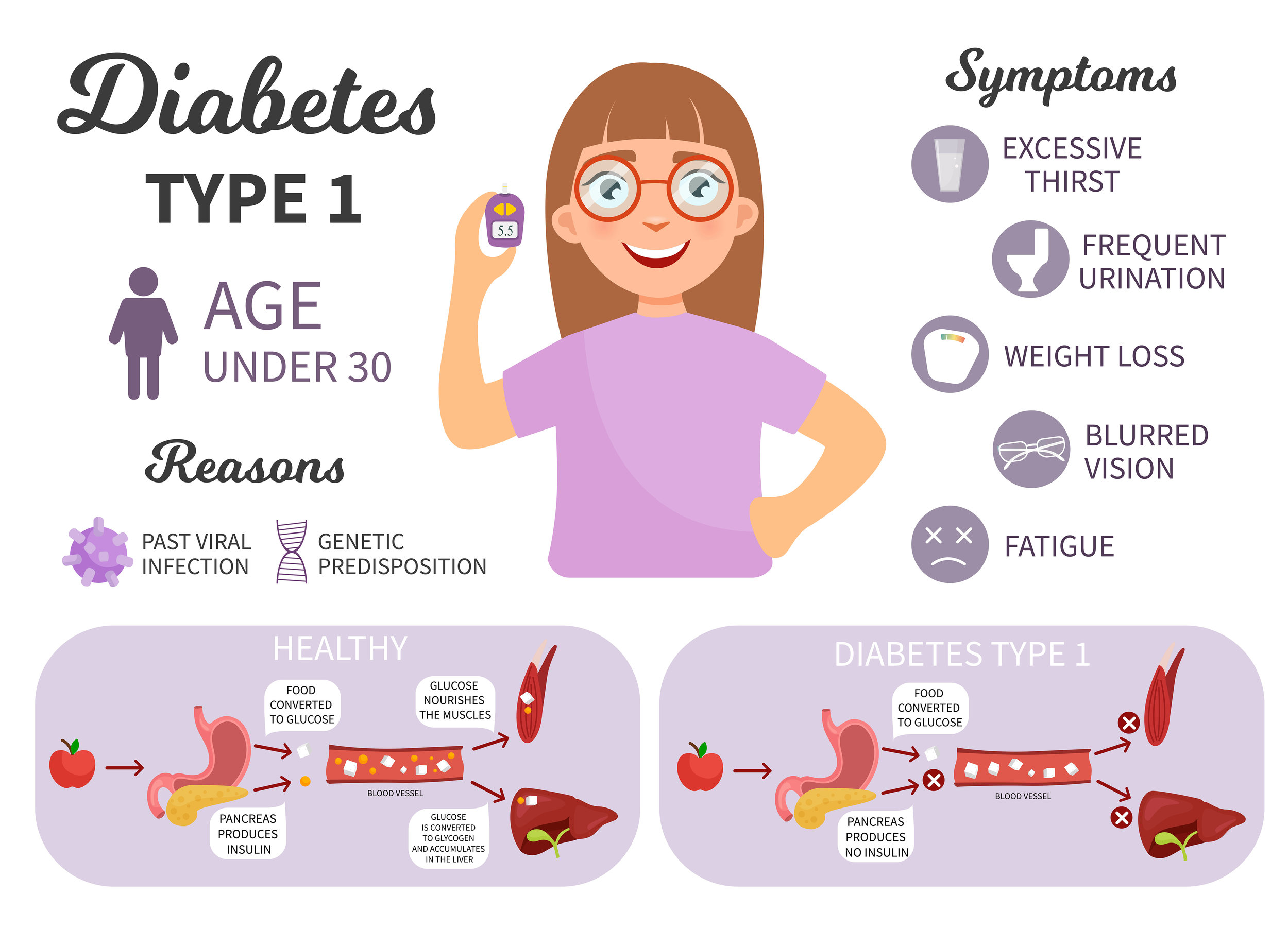
Dysbiosis of the healthy gut microbiota leads to an altered balance of bacteria. Some studies suggest that diverticular pockets may encourage specific microbe communities that influence inflammation, in some cases leading to the progression of diverticulosis to symptomatic uncomplicated diverticular disease or diverticulitis.
A 2019 review article by Dr Antonio Tursi of the Gastroenterology Service, ASL BAT, Andria, Italy states, “Inflammation probably does not play any role in the occurrence of colonic diverticulosis. Two European papers, published at the beginning of this decade, found that no signs of histological inflammation were found in people having colonic diverticulosis. Theoretically, we cannot exclude that inflammation could play a role in the pathogenesis of diverticulosis, but this role is just marginal.”
The review adds, “As it is well known, acute diverticulitis shows significant signs of inflammation. However, its real pathogenesis is still unclear.”
Its authors believe that progression to diverticulitis is caused by compression of vascular structures in the diverticula, but inflammation may also play a role. They point to an increase in the expression of compounds including TNF-α, which is likely due to genetic predispositions involving immunoregulatory genes, triggering the occurrence of inflammation.
They point to an increase in the expression of compounds including TNF-α, which is likely due to genetic predispositions involving immunoregulatory genes, triggering the occurrence of inflammation.
The important anti-inflammatory mediator interleukin-10 is seen at raised levels in symptomatic uncomplicated diverticular disease, a probable attempt by the immune system to control a low-grade inflammation.
Further evidence for chronic inflammation in the course of diverticular disease is the beneficial effect of prescribing mesalazine. Low-grade inflammation may also interact with other disease-causing pathways to cause diverticular disease, such as alterations in the enteric nervous system, which controls gastrointestinal behaviour.
The 2019 review authors conclude that, although most of the mechanisms leading to the occurrence of diverticular disease remain to be elucidated, “the role of low-grade inflammation seems to be a proven fact”.
Understanding the role of inflammation in each of these gastrointestinal diseases is essential for improving screening, diagnosis, and therapeutic strategies for patients. Certain common inflammatory cytokines and pathways are recognized drivers of inflammation across each disease, and the gut microbiota appears to play a role, but their specific effects are yet to be confirmed.
Certain common inflammatory cytokines and pathways are recognized drivers of inflammation across each disease, and the gut microbiota appears to play a role, but their specific effects are yet to be confirmed.
Diverticular disease – treatment in St. Petersburg. Diverticular disease of the colon
Diverticular disease is a chronic disease that occurs due to the formation of a sac-like protrusion (diverticulum) in the intestinal wall, and, as a result, a congestive process and the development of inflammation.
Sometimes there is a single diverticulum, but, as a rule, most often people have multiple protrusions in one of the sections of the intestine.
Diverticula are divided into “true” and “false”, as well as “congenital” and “acquired”.
- True diverticula are most often congenital – due to a direct violation of the structure of the intestine. One of the features of a true diverticulum is that the walls of the diverticulum have all the layers characteristic of the intestine.
 True diverticula, for example, include Meckel’s diverticulum: a protrusion of the wall of the small intestine at the confluence of an unclosed embryonic vitelline duct into it as an anomaly of development.
True diverticula, for example, include Meckel’s diverticulum: a protrusion of the wall of the small intestine at the confluence of an unclosed embryonic vitelline duct into it as an anomaly of development. - False diverticula are acquired and represent a bulging of the intestinal mucosa outward through thinned places in its muscular layer.
As a rule, acquired diverticula are multiple and rarely occur in a single number.
Diverticulosis is a change in the intestinal wall with the presence of multiple diverticula in it without inflammatory processes occurring in them and not manifesting themselves clinically.
If an inflammatory process develops in the diverticulum, they speak of diverticulitis and, as a result, the development of diverticular disease.
Incidence of diverticular disease
Of all the diseases of the colon, intestinal damage by diverticula is one of the most common in the modern world. The frequency of diverticular disease reaches an average of 20% in European countries; moreover, in older age groups of the population (60–80 years), the frequency increases, reaching 40–50%, and among patients over the age of 80, the incidence reaches 60–65%. In our country, diverticula of the large intestine are found in approximately 17-28% of gastroenterological patients. The frequency of the disease in men and women is approximately the same.
In our country, diverticula of the large intestine are found in approximately 17-28% of gastroenterological patients. The frequency of the disease in men and women is approximately the same.
Classification of diverticular disease
- Uncomplicated. This form is detected incidentally during X-ray or endoscopic examination of the intestine. In blood tests, as a rule, no changes are found. An examination must be carried out to assess the prevalence of intestinal damage, predict the course of the disease and choose a method for preventing complications or treatment.
- Complicated with acute inflammatory process (diverticulitis, diverticular infiltrate, diverticulum perforation, abscess, peritonitis), chronic inflammatory process, and bleeding. The chronic process includes situations when the inflammation cannot be eliminated within 6 weeks, or it occurs again. In severe cases, an infiltrate, narrowing of the intestine, or a fistula from a destroyed diverticulum may form.

Causes of diverticula
The occurrence of this disease does not have any specific cause. It is due to a combination of many factors. There is an opinion about the predisposition of some people to this disease due to congenital underdevelopment of the muscular layer of the intestinal wall. As a result, they develop diverticula with age or under the influence of any factors.
Congenital predisposition plays a role in people with hereditary connective tissue dysplasia syndromes (Marfan, Ehlers-Danlos syndromes, when there is a deficiency of collagen in the human body), a combination of diverticular disease of the large intestine with diseases associated with a decrease in elasticity and strength of the connective tissue (hernias) is also common. , varicose disease, visceroptosis, polycystic).
However, congenital inferiority of tissues is not the only reason for the occurrence of pathological changes in the intestinal wall.
The high incidence of diverticular disease in the elderly is associated with a gradual decrease in the tone of the colon wall as the body ages. Diverticular disease is a chronic disease that occurs due to the formation of a sac-like protrusion (diverticulum) in the intestinal wall, and, as a result of a congestive process, the development of inflammation in them. The muscular layer of the colon becomes thicker and less elastic. The supporting connective tissue loses its elasticity, and the intestinal wall becomes less extensible. Therefore, diverticula in people of the older age group appear more often than in young people.
Diverticular disease is a chronic disease that occurs due to the formation of a sac-like protrusion (diverticulum) in the intestinal wall, and, as a result of a congestive process, the development of inflammation in them. The muscular layer of the colon becomes thicker and less elastic. The supporting connective tissue loses its elasticity, and the intestinal wall becomes less extensible. Therefore, diverticula in people of the older age group appear more often than in young people.
It is also known that diverticula occur significantly more often with a decrease in plant fibers and fiber in the diet. Therefore, in vegetarians, diverticular disease is 3 times less common than in people who limit the intake of vegetables and fruits. Foods low in fiber poorly stimulate intestinal motility, slow down the movement of contents through the large intestine, which increases the absorption of water and, as a result, constipation develops. The retention of feces in the intestines, combined with a violation of the normal intestinal microflora, leads to inflammation and the progression of diverticular disease. This can also explain the more frequent occurrence of diverticula in the sigmoid colon (constipation in this case plays the role of a resolving factor).
This can also explain the more frequent occurrence of diverticula in the sigmoid colon (constipation in this case plays the role of a resolving factor).
The clinical picture in about two out of three cases is not accompanied by any complaints (asymptomatic diverticulosis), the pathology is detected by chance during endoscopic or X-ray studies. Most often, the first signs of diverticular disease are pain and functional disorders in the form of constipation or diarrhea. There are complaints of regularly recurring pain in the abdomen, more often in the left iliac region or lower sections, disappearing after defecation. Pains of varying intensity can exist for a long time – from several weeks to months. Increased pain is sometimes accompanied by fever, signs of intoxication may appear (dry mouth, nausea, tachycardia). Also, bloating and profuse gas separation, various dyspeptic disorders are often noted, which is sometimes hidden under the guise of irritable bowel syndrome.
Complications of diverticular disease of the colon
- Diverticulitis.
 This is an acute inflammation that occurs in diverticula in a quarter of patients with diverticulosis. Signs of the development of inflammation can be the appearance of pain and tension in the muscles of the anterior abdominal wall, fever, chills, bloating, stool disorders in the form of diarrhea or constipation.
This is an acute inflammation that occurs in diverticula in a quarter of patients with diverticulosis. Signs of the development of inflammation can be the appearance of pain and tension in the muscles of the anterior abdominal wall, fever, chills, bloating, stool disorders in the form of diarrhea or constipation.
- Diverticulum perforation. Against the background of the inflammatory process in the diverticulum, part of its wall may collapse, and the intestinal contents enter the abdominal cavity. At the same time, local or diffuse peritonitis develops. With perforation (rupture of the wall) of the diverticulum into the retroperitoneal tissue or the space between the sheets of the mesentery, infiltrates or abscesses appear.
- Bleeding. Occurs in approximately 25% of patients with diverticular disease. For many people, it may be the first and only manifestation of the disease. Usually bleeding is associated with ulceration of the wall of the diverticulum as a result of chronic inflammation.
 Also, in place of a fecal stone, a pressure sore may form with damage to the blood vessel. The intensity of bleeding can be different: from a slight admixture of blood in the feces (sometimes there is hidden bleeding, which is manifested by a gradual increase in anemia), to massive profuse bleeding, accompanied by collapse and even leading to death.
Also, in place of a fecal stone, a pressure sore may form with damage to the blood vessel. The intensity of bleeding can be different: from a slight admixture of blood in the feces (sometimes there is hidden bleeding, which is manifested by a gradual increase in anemia), to massive profuse bleeding, accompanied by collapse and even leading to death.
- Intestinal obstruction. The cause of intestinal obstruction may be an inflammatory process around the diverticulum or adhesions, leading to deformation of the intestine and disruption of the movement of stool along it. In rare cases, invagination (screwing) of a part of the intestine with a diverticulum or spasm of smooth muscles may occur.
- Intestinal fistulas. May occur when a diverticulum is perforated and an abscess ruptures into a nearby organ (the so-called “internal fistulas”). Men are more likely to develop fistulas with the bladder, women – with the vagina. With the formation of an entero-vesical fistula, air or an admixture of feces may appear in the urine.

Diagnosis of diverticular disease
- Irrigoscopy is an x-ray examination in which the colon lumen is filled with a contrast suspension and its condition is assessed during filling and after bowel emptying.
- Colonoscopy can detect the presence of multiple diverticula, signs of inflammation or intestinal bleeding, and may also be helpful in detecting associated lesions such as polyps and cancer.
- MSCT (multispiral computed tomography). Appropriate for the differential diagnosis of diverticulitis and tumor lesions of the colon.
Treatment
The main goal of treating diverticular disease is to normalize bowel function, prevent disease progression and complications, and relieve exacerbations.
Diet
Since diverticular disease is much more common in people who restrict their dietary intake of vegetables and fruits, all patients with diverticulosis should use foods high in vegetable fiber and pectin. Wheat bran is very useful (especially coarse bran), which significantly reduces the pressure inside the intestine and accelerates the speed of movement of the contents through the intestine.
Wheat bran is very useful (especially coarse bran), which significantly reduces the pressure inside the intestine and accelerates the speed of movement of the contents through the intestine.
Be sure to exclude all foods that cause increased gas formation (legumes, lentils, grapes, sauerkraut, butter and yeast dough, onions) and constipation (blueberries, rice). It is also advisable to exclude seeds, fruits with a large number of grains and excessively coarse fiber (persimmon, pineapple, turnip, radish, radish).
Drug treatment
- In an uncomplicated course, the disease does not require the use of drugs. The need to take medication arises depending on the clinical manifestations.
- Antispasmodics are used for abdominal pain.
- When dysbacteriosis is detected, drugs that help restore normal intestinal microflora.
- With persistent constipation, drugs are taken to enhance the motility of the stomach and intestines: lactulose preparations, vaseline or olive oil orally or in microclysters.

- In case of diverticulosis with clinical manifestations of inflammation, it is necessary to use the whole range of therapeutic measures: laxative diet, antispasmodics; drugs that regulate the motor function of the intestine, and drugs that normalize the composition of the bacterial flora of the intestine.
Surgical treatment
The need for surgical treatment for diverticular disease can arise both urgently and in a planned manner. This happens when complications occur that can threaten a person’s life (bleeding, perforation, peritonitis).
Planned surgical treatment is always aimed at eliminating the threat of such complications. The choice of the operation method in each specific case depends on the prevalence of the process, inflammatory changes in the diverticula, the condition of the intestinal wall and surrounding tissues, the presence of inflammation outside the intestinal lumen or peritonitis. It is important to take into account comorbidities often observed in the elderly. As a rule, resection (removal) of the affected part of the large intestine is performed in a planned manner with simultaneous imposition of an anastomosis.
As a rule, resection (removal) of the affected part of the large intestine is performed in a planned manner with simultaneous imposition of an anastomosis.
Surgical treatment in our Clinic is performed laparoscopically, which allows patients to quickly return to active life. A planned operation is always performed during the period of remission, 2-3 months after the removal of an acute attack of the disease. Colon fistulas are an indication for planned surgical treatment, since it is not possible to achieve their self-healing, and chronic inflammation leads both to the development of rough scars that disrupt the passage of intestinal contents, and to the development of chronic intoxication and a decrease in immunity. With the formation of intestinal-vesical fistulas, there is a threat of developing an ascending urinary tract infection and kidney damage.
- Surgical removal of fistulas is a complex surgical intervention requiring the participation of highly qualified specialists.
 In our clinic, when planning such interventions, if necessary, related specialists (urologists, gynecologists, endoscopists) are involved. In case of intestinal bleeding, conservative treatment (hemostatic therapy) is most often prescribed or endoscopic hemostasis is performed. The operation is performed only when conservative methods of treatment are ineffective.
In our clinic, when planning such interventions, if necessary, related specialists (urologists, gynecologists, endoscopists) are involved. In case of intestinal bleeding, conservative treatment (hemostatic therapy) is most often prescribed or endoscopic hemostasis is performed. The operation is performed only when conservative methods of treatment are ineffective. - Surgical treatment of diverticulum perforation. If the operation is urgent, a colostomy may be used to reduce the risk of postoperative complications. Reconstructive surgery with closure of the colostomy and restoration of intestinal continuity is performed after the inflammatory process subsides (after about 3 months).
Dispensary observation
Patients with diverticular disease should be regularly observed by a gastroenterologist or coloproctologist. Colonoscopy in the absence of complaints is performed at intervals of 1 time in 3 years.
If pain and other manifestations of the disease occur, the examination should be completed as soon as possible. With frequent periodic recurrences of diverticulitis, regular anti-relapse courses of treatment are indicated.
With frequent periodic recurrences of diverticulitis, regular anti-relapse courses of treatment are indicated.
Forecast
The prognosis, as a rule, is favorable, if the disease is detected in a timely manner, the necessary preventive and therapeutic measures are started, provided that the patient complies with all the necessary recommendations.
However, if the need for prevention is ignored, diverticular disease can lead to the development of severe complications that threaten the life and health of the patient. Moreover, the disease is more common among older people who have a variety of concomitant diseases and lower body resistance.
Prevention
Among preventive measures, a varied and balanced diet is of primary importance. Due to the fact that a diet low in plant fibers predisposes to the formation of diverticula, in order to reduce the risk of developing the disease, it is necessary to include plant-based products in large quantities.
Since the timely detection of diverticula plays an important role, it is extremely important to undergo a preventive examination and regularly perform an endoscopic examination of the intestine.
symptoms, diagnosis, treatment of diverticulitis – Department of the State Hospital NCC No. 2 (CCH RAS)
Diverticula are areas of the intestine in which protrusion of tissues is observed. When inflammation of these areas occurs, intestinal diverticulitis begins. Inflammation is provoked by fecal masses that enter the diverticula and accumulate in them, irritating the walls and leading to the development of infection. Long-term malnutrition is considered the main cause of the onset of the disease. Adult patients usually suffer from diverticulitis – it develops in women and men over 60 years of age.
Causes of disease
The main factor that provokes the disease is malnutrition. This refers to the use of a large number of semi-finished products, low-quality food rich in fat and refined foods. Also, malnutrition includes reduced fiber intake. It is fiber in food that helps the proper movement of the masses through the intestines.
Also, malnutrition includes reduced fiber intake. It is fiber in food that helps the proper movement of the masses through the intestines.
Localization of diverticulitis
The disease can affect different parts of the intestine:
- Diverticulitis of the small intestine – multiple protrusions of the mucosa through weak spots in the walls. In this zone, diverticula appear much less frequently than in the colon. The cause is believed to be a failure of peristalsis.
- Diverticulitis of the large intestine – masses up to two centimeters, often affecting elderly patients. The reason is malnutrition, the predominance of animal food over plant food.
- Sigmoid diverticulitis – a degenerative tissue disorder that appears as a result of a violation of peristalsis and vascular pathologies.
Symptoms of diverticulitis
When the disease begins, its symptoms in most cases are absent. Only when the disease passes into the chronic stage, there are signs by which it can be identified.:max_bytes(150000):strip_icc()/Aids-and-autoimmune-diseases-5113376_final-f35eaa36335d4e4d8638ac86fdf16146.jpg) Among the warning signs that indicate the presence of problems:
Among the warning signs that indicate the presence of problems:
- Bloating, excessive flatulence.
- Traces of blood in the stool.
- Increased body temperature.
- Pain in the lower abdomen and back.
- Nausea, vomiting.
- Decreased appetite.
- Cold sweat.
Disease diagnosis
This serious complication requires immediate diagnosis, analysis of symptoms and treatment. The initial task of the doctor is to distinguish diverticulitis from stomach ulcers and irritable bowel syndrome. It all starts with questioning the patient, compiling a medical history, conducting an initial examination. Diagnostic methods that are used for suspected diverticulitis:
- Colonoscopy
- Sigmoidoscopy
- Irrigoscopy
- Computed tomography of the intestine
- X-ray of the intestines
- ultrasound
- Clinical analysis of urine and blood
Treatment of disease
There is a resolution of diverticulitis without special treatment due to the normalization of nutrition and diet. With a serious stage of the disease, how to treat it is determined individually and often in a hospital. In this case, the patient is given antibiotics and other supportive drugs. The operation is performed in order to separate the affected part of the intestine. Such a measure is required quite rarely:
With a serious stage of the disease, how to treat it is determined individually and often in a hospital. In this case, the patient is given antibiotics and other supportive drugs. The operation is performed in order to separate the affected part of the intestine. Such a measure is required quite rarely:
- If the disease is severely advanced. There are fistulas, perforations, abscesses.
- When antibiotics do not help get rid of the problem.
- There is bleeding, peritonitis.
Risk of complications
Most of the complications of diverticulitis are associated with perforation, leakage of feces through the walls of the intestine:
- Abscess – removal of the affected part or puncture is required.
- Peritonitis is the spread of infection into the abdominal cavity. The operation is necessary to cleanse the abdominal cavity and remove part of the intestine.
- Intestinal obstruction – scarring resulting in partial or complete blockage of the lumen.



 2011.
2011.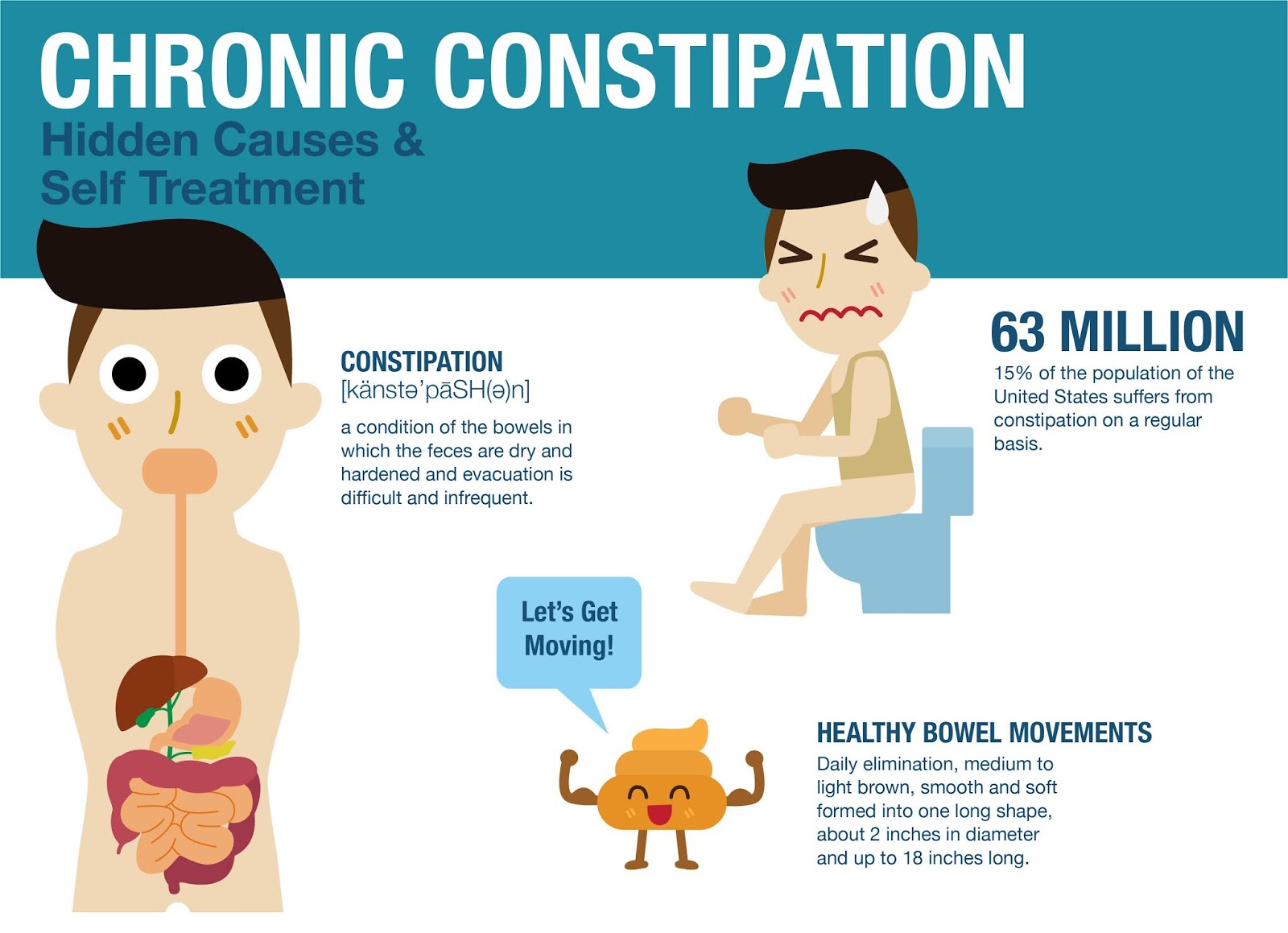
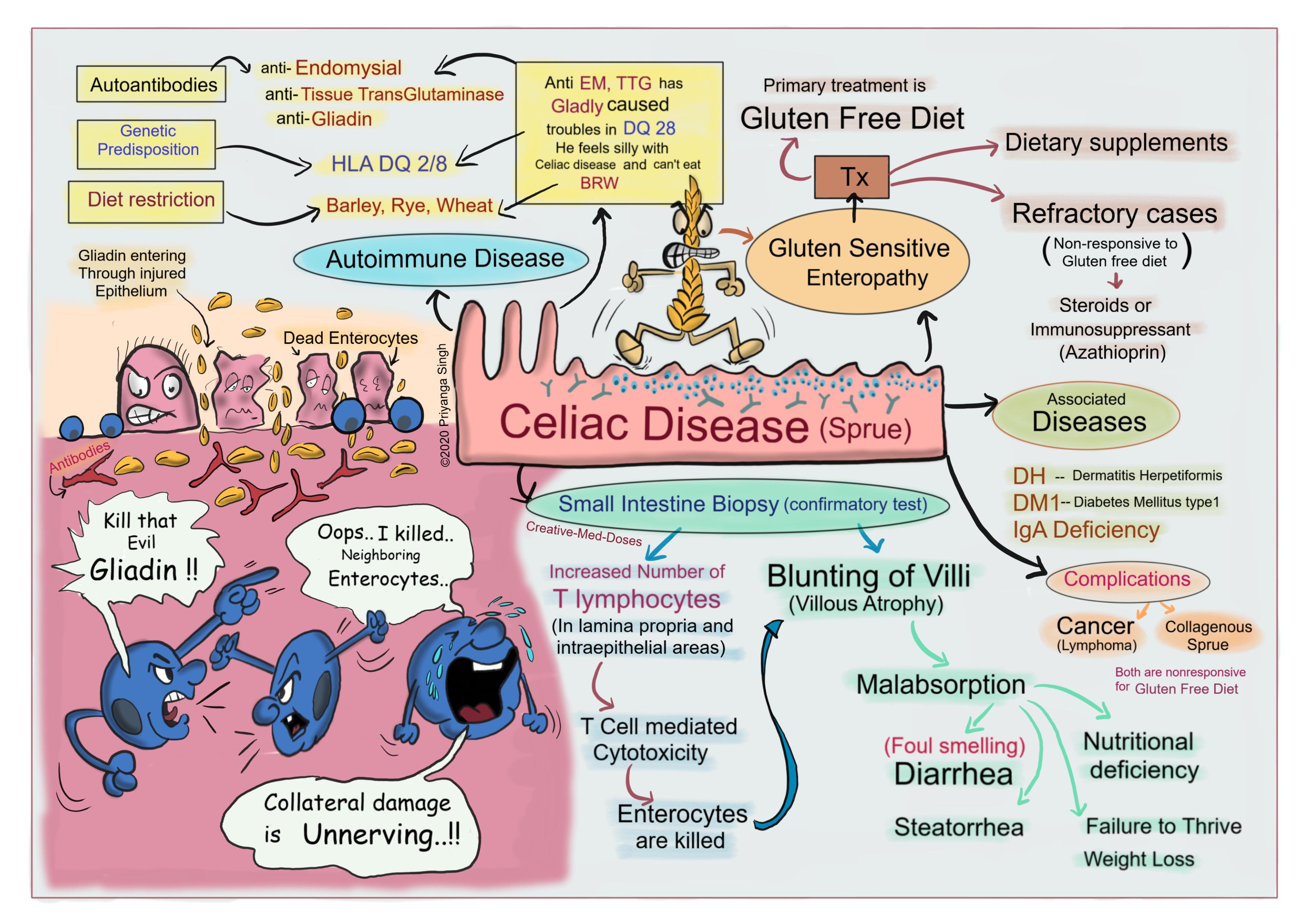 e5. doi: 10.1016/j.cgh.2021.01.003. Epub 2021 Jan 5.
e5. doi: 10.1016/j.cgh.2021.01.003. Epub 2021 Jan 5. True diverticula, for example, include Meckel’s diverticulum: a protrusion of the wall of the small intestine at the confluence of an unclosed embryonic vitelline duct into it as an anomaly of development.
True diverticula, for example, include Meckel’s diverticulum: a protrusion of the wall of the small intestine at the confluence of an unclosed embryonic vitelline duct into it as an anomaly of development.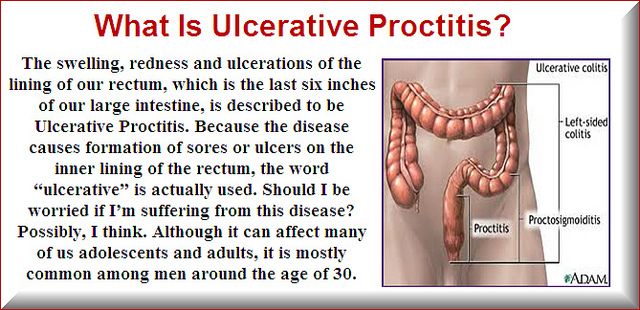
 This is an acute inflammation that occurs in diverticula in a quarter of patients with diverticulosis. Signs of the development of inflammation can be the appearance of pain and tension in the muscles of the anterior abdominal wall, fever, chills, bloating, stool disorders in the form of diarrhea or constipation.
This is an acute inflammation that occurs in diverticula in a quarter of patients with diverticulosis. Signs of the development of inflammation can be the appearance of pain and tension in the muscles of the anterior abdominal wall, fever, chills, bloating, stool disorders in the form of diarrhea or constipation. Also, in place of a fecal stone, a pressure sore may form with damage to the blood vessel. The intensity of bleeding can be different: from a slight admixture of blood in the feces (sometimes there is hidden bleeding, which is manifested by a gradual increase in anemia), to massive profuse bleeding, accompanied by collapse and even leading to death.
Also, in place of a fecal stone, a pressure sore may form with damage to the blood vessel. The intensity of bleeding can be different: from a slight admixture of blood in the feces (sometimes there is hidden bleeding, which is manifested by a gradual increase in anemia), to massive profuse bleeding, accompanied by collapse and even leading to death.

